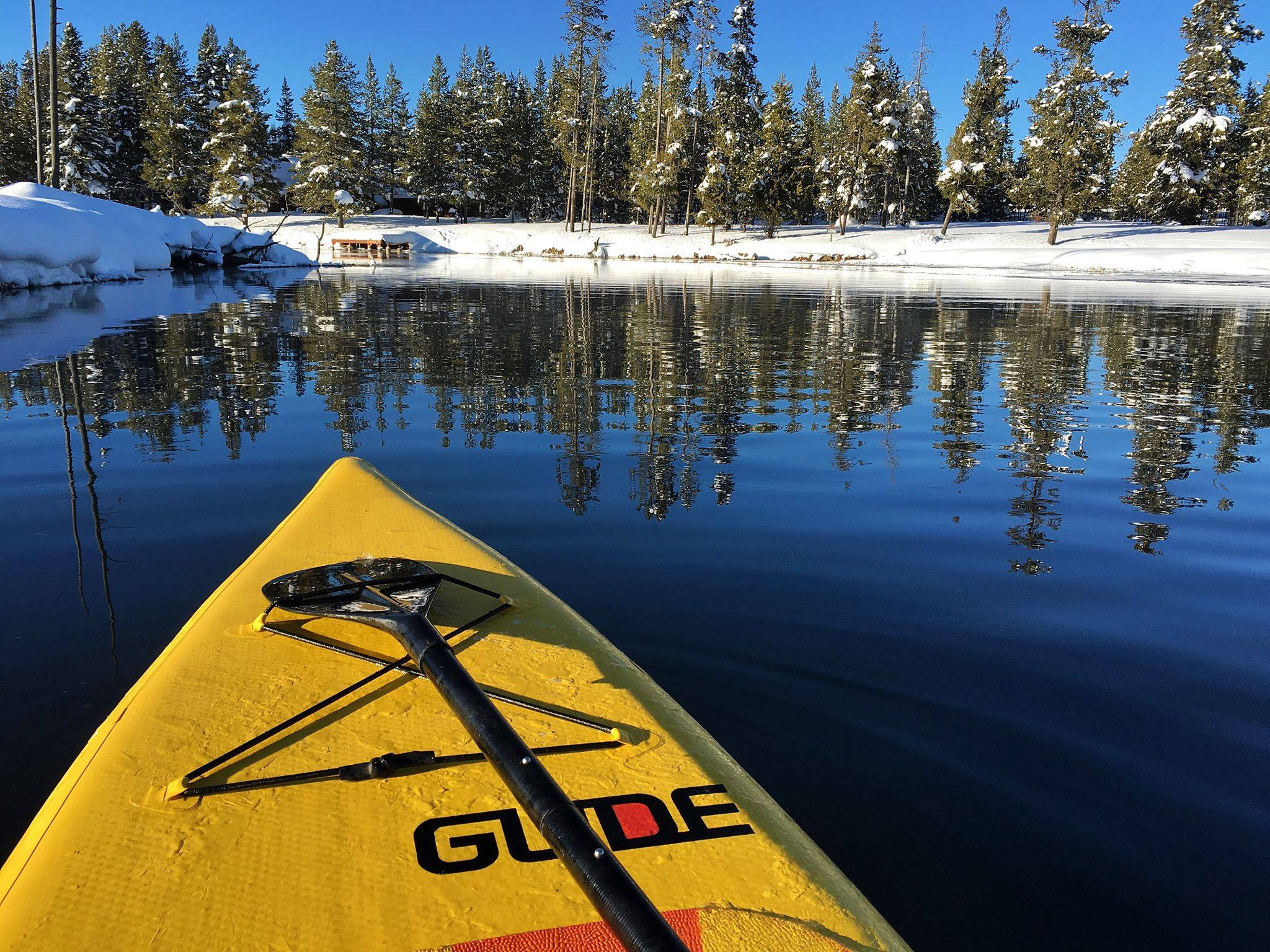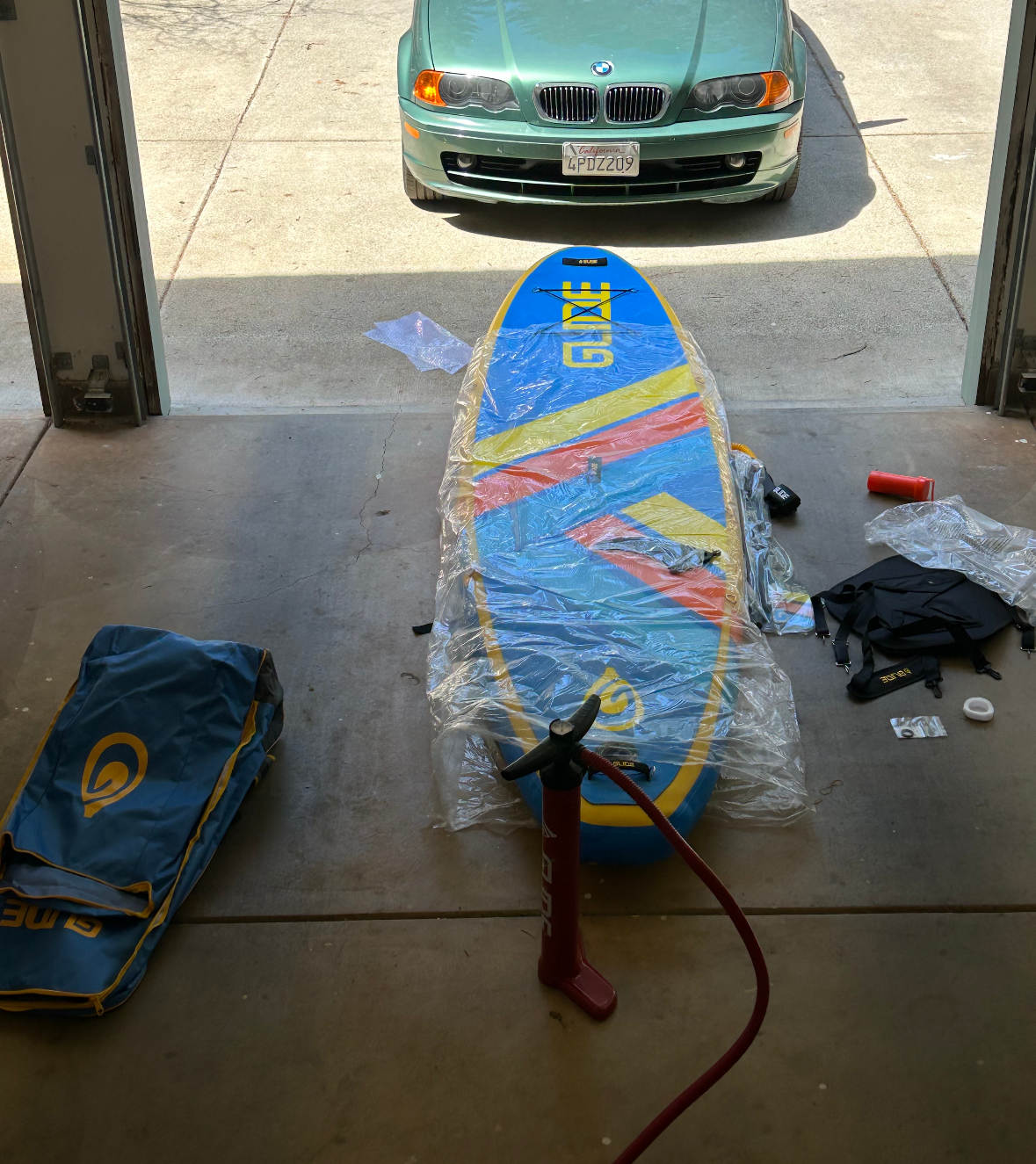
Can Inflatable Paddle Boards Burst? Understanding the Risks and How to Prevent Them
Inflatable paddle boards can burst — but it’s rare. Learn how overinflation, heat, and wear affect your iSUP and what steps keep it performing safely for years.
While inflatable paddle boards can burst, it’s a rare event that’s almost always preventable.
The main culprits are overinflation, temperature changes, or neglecting wear and tear.
By following proper inflation guidelines and taking care of your board, you can paddle confidently for years without issue.
Table of contents
Introduction
Inflatable paddle boards (iSUPs) have revolutionized the sport, combining portability with impressive durability. Yet many new paddlers wonder — can inflatable paddle boards burst? The short answer: yes, but it’s extremely rare when used correctly.
Let’s take a closer look at what causes a board to burst, how to prevent it, and why a high-quality iSUP like those from Glide is built to handle tough conditions safely.

1. The Reality of Bursting Risks
Although the idea of your paddle board bursting sounds alarming, it’s not something that happens under normal use. Modern inflatable SUPs are engineered to withstand high internal pressure and rough handling. However, certain situations — primarily overinflation, temperature fluctuations, and material wear — can increase the risk.
2. Overinflation: The #1 Cause
Overinflating an iSUP is the most common cause of bursting. Every board is designed to operate within a specific PSI range (usually between 12–25 PSI, depending on construction). When that range is exceeded, pressure builds faster than the seams and material can handle.
Pro Tip:
-
Always use a pump with a reliable pressure gauge.
-
Follow your manufacturer’s exact recommended PSI.
-
Never “top off” your board based on feel alone — accuracy matters.
Glide’s boards, for example, are rated to 25 PSI, thanks to their AeroMatrix™ cross-woven drop stitch core and ThermoFuse™ triple-layer rails, which dramatically increase internal strength and pressure tolerance.
3. Temperature Changes: The Hidden Pressure Builder
Air expands in heat and contracts in cold — a natural phenomenon that affects your board’s internal pressure. If you inflate your board early in the morning when it’s cool, then leave it under direct sun or in a hot car, internal air expansion can push PSI beyond safe limits.
Preventive Measures:
-
Inflate to 1–2 PSI below the maximum if you’ll be paddling in hot conditions.
-
Keep your board out of direct sunlight when not in use.
-
Avoid leaving a fully inflated board on a dock, car roof, or beach for extended periods.
Conversely, cold conditions can make your board feel slightly underinflated — it’s safe to add a little air before paddling, but always check PSI regularly.

4. Material Fatigue and Structural Wear
Even the most rugged inflatable paddle boards can degrade over time with exposure to UV rays, saltwater, and rough surfaces. Small punctures or seam weaknesses can reduce pressure tolerance and, in rare cases, lead to failure.
Maintenance Checklist:
-
Inspect for scuffs, cuts, or seam bubbles before every paddle.
-
Rinse your board with fresh water after saltwater use.
-
Store in a cool, shaded area when not in use.
-
Repair small punctures immediately using the included patch kit or professional repair service.
Boards made with woven or cross-woven drop stitch technology and fused rails (not glued) — like Glide’s — have dramatically reduced risk of seam separation and bursting.
5. How to Prevent a Burst: Essential Best Practices
Here’s how to keep your inflatable SUP safe and long-lasting:
-
✅ Follow the PSI guidelines. Never exceed manufacturer recommendations.
-
🌡️ Account for temperature changes. Inflate slightly less on hot days.
-
🔍 Inspect regularly. Check seams and rails for damage before inflating.
-
🧰 Repair promptly. Small issues become big problems if ignored.
-
🏆 Invest in quality. Boards built with advanced materials — like Glide’s AeroMatrix™ and ThermoFuse™ tech — are designed to perform under high PSI safely.
So, Can Inflatable Paddle Boards Burst and What Should You Do if One Does?
If an inflatable paddle board does fail, it typically won’t “explode.” Instead, you might hear a loud pop followed by rapid air loss from a seam or valve area. This is rarely dangerous — you’ll still be buoyant for a few moments and can easily return to shore.
Pro Tip: If this ever happens, immediately deflate the board fully and contact the manufacturer for support. Most quality brands, including Glide, offer warranties that cover manufacturing defects.

Final Thoughts
While inflatable paddle boards can technically burst, the risk is minimal when you follow basic precautions. Proper inflation, awareness of temperature effects, and consistent maintenance will keep your board performing safely for years.
Today’s high-end iSUPs — especially those built with cross-woven drop stitch construction and ThermoFuse™ rails — are tougher than ever. Treat your board well, and it’ll handle every adventure you throw at it with ease.
FAQs
Can an inflatable paddle board pop in the sun?
Yes, if left fully inflated in direct sunlight, heat expansion can increase PSI and cause damage. Always reduce air pressure slightly on hot days.
What PSI should I inflate my paddle board to?
Most boards are safe between 12 and 18 PSI, while Glide boards can handle up to 25 PSI due to their advanced construction.
How do I know if my board is overinflated?
Use a pressure gauge — never inflate by feel. If you exceed the recommended PSI, release air immediately.
What’s the safest way to store an inflatable SUP?
Deflate slightly and keep it in a cool, dry area away from direct sunlight or freezing temperatures.
Can a high-quality inflatable paddle board last 5+ years?
Absolutely. With proper care, boards like the Glide Retro or Quest can last well over five years without any risk of bursting.





